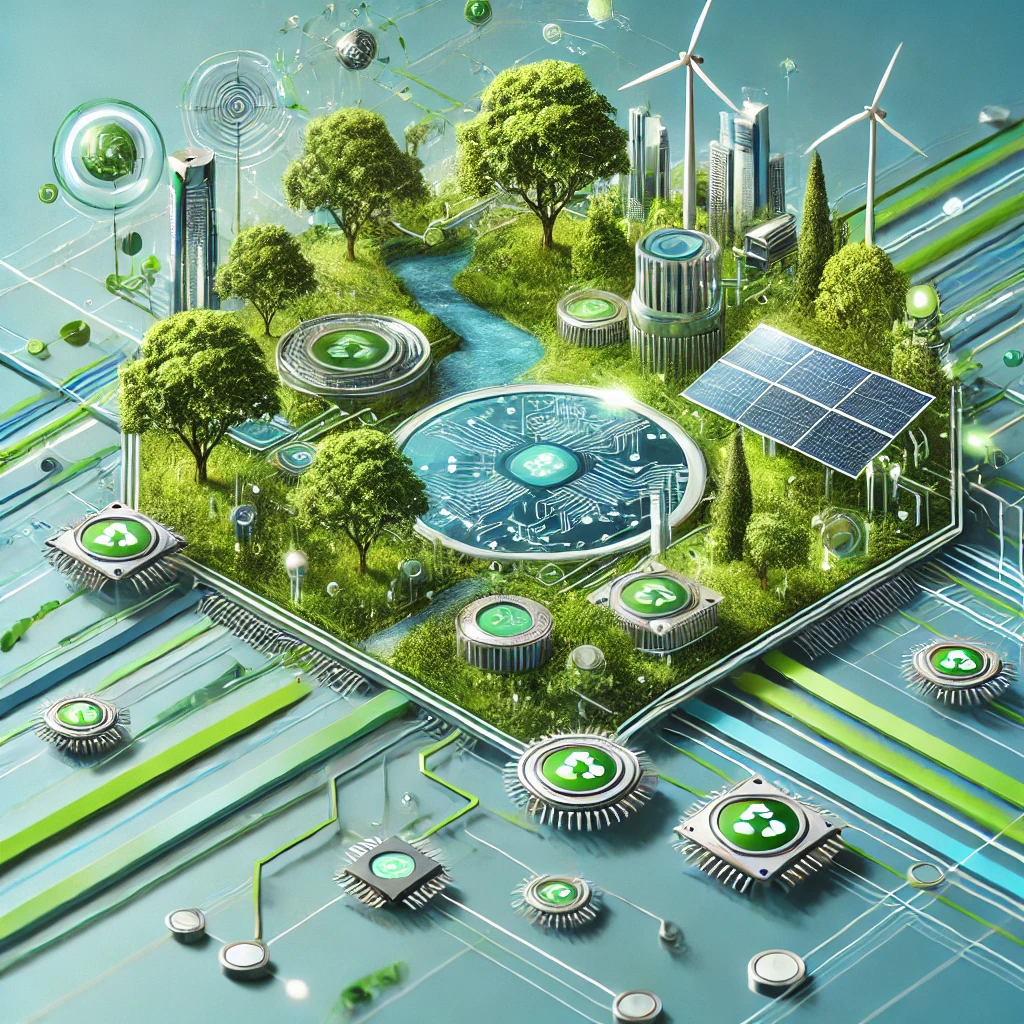
The Impact of Micronitch on Sustainable Technologies and Green Innovations
Introduction: Micronitch – The Game Changer for Sustainability
Have you ever wondered how tiny disruptions can create huge shifts in technology? Well, that’s exactly what “micronitch” is all about. This revolutionary concept is helping usher in a new wave of sustainable technologies and green innovations. From AI to smart homes, micronitch is leaving its mark on every corner of modern tech.
The Latest Innovations in AI and Their Real-Life Applications
Artificial intelligence (AI) has exploded onto the scene in recent years. But what does that mean for us in real life? Well, AI is not just a buzzword anymore—it’s a powerful tool that's already reshaping our world. For instance, AI-powered machines help reduce energy consumption in smart homes, enhance waste management processes, and even help farmers optimize crop production.
These innovations in AI aren't just cool—they’re also environmentally friendly. AI helps in reducing carbon footprints by optimizing resource usage and cutting down on waste.
AI and Smart Home Technologies: Simplifying Life
If you think smart home gadgets are just fancy add-ons, think again! The best smart home gadgets to simplify your life are also contributing to energy conservation and efficiency. For example, smart thermostats learn your preferences and adjust heating and cooling accordingly, which can save a significant amount of energy—and money!
How IoT is Revolutionizing Industries
Imagine a world where everything you use is connected and communicates with one another. This is the Internet of Things (IoT) in action. From smart refrigerators that track food waste to sensors that monitor air quality, IoT is changing the way industries operate and interact with consumers.
In the context of sustainable technologies, IoT’s ability to provide real-time data can make systems more efficient, helping industries reduce their environmental impact.
Practical Uses of IoT in Sustainable Technologies
One of the most exciting ways IoT is being used in sustainability is through smart energy grids. These grids use real-time data to efficiently distribute energy and minimize waste. This leads to significant reductions in energy consumption, making the world greener.
Top 5G-Enabled Devices You Need to Know About
5G isn’t just a faster version of 4G; it’s a game changer for connectivity. It opens the door to innovations that were previously unimaginable, such as real-time remote surgeries, smart cities, and autonomous vehicles. But how does 5G relate to sustainability?
5G networks can significantly reduce energy consumption in data transmission. With faster speeds and more efficient technologies, 5G allows for the development of more sustainable solutions in industries like transportation and manufacturing.
How 5G is Impacting Connectivity and Sustainability
5G offers lower latency and increased bandwidth, which makes everything smarter and faster. This efficiency plays a crucial role in supporting sustainable technologies. From reducing emissions with smarter traffic systems to enabling quicker delivery of green solutions, 5G is a vital part of the puzzle.
Best Smart Home Gadgets to Simplify Your Life
Smart home gadgets are all the rage right now, but what makes them so important in terms of sustainability? It’s simple—these gadgets make your life more convenient while cutting down on energy use. Some gadgets you need to consider are:
- Smart Thermostats: These devices learn your habits and adjust home temperatures for optimal energy efficiency.
- Smart Lighting Systems: These systems adjust lighting based on natural light levels, reducing unnecessary energy usage.
- Smart Plugs: These plugs monitor energy usage and turn off devices when they’re not in use.
Sustainable Technology Innovations for a Greener Future
Innovation is at the heart of sustainability. From solar power to green construction technologies, sustainable tech is making the world a cleaner, greener place. New innovations in renewable energy, like solar windows and advanced wind turbines, are helping reduce dependence on fossil fuels.
Moreover, waste-to-energy technologies are turning garbage into usable power, while green tech in manufacturing ensures that businesses can meet consumer demands without harming the environment.
Practical Uses of Sustainable Technologies in Everyday Life
It’s not just industries benefiting from sustainable technologies. You can use these innovations in your daily life to reduce your environmental footprint. Here are a few examples:
- Solar Panels: Install solar panels to reduce electricity bills and contribute to a cleaner energy future.
- Electric Vehicles: Driving electric cars reduces carbon emissions and promotes greener travel options.
- Smart Water Management Systems: These systems help conserve water by monitoring usage and detecting leaks.
Conclusion: Micronitch and Its Role in Sustainable Technologies
Micronitch may be a small concept, but its effects on sustainable technologies are massive. By enabling new innovations in AI, IoT, 5G, and smart home technologies, micronitch is setting the stage for a greener, more sustainable future. These technologies not only simplify our lives but also help conserve resources, reduce waste, and lower energy consumption—ultimately helping save the planet.
FAQs
- What is micronitch? Micronitch refers to the small but impactful technological disruptions that drive large-scale innovation in sustainability.
- How can AI contribute to sustainable technologies? AI can optimize energy consumption, reduce waste, and improve efficiency in various industries, promoting sustainability.
- What are the best smart home gadgets for sustainability? Smart thermostats, lighting systems, and plugs are great choices for reducing energy usage and making your home more eco-friendly.
- How does 5G contribute to sustainability? 5G enhances efficiency in data transmission, which supports the development of sustainable solutions in various industries.
- What are practical uses of sustainable technologies in everyday life? Examples include using solar panels, electric vehicles, and smart water management systems to reduce your environmental footprint.